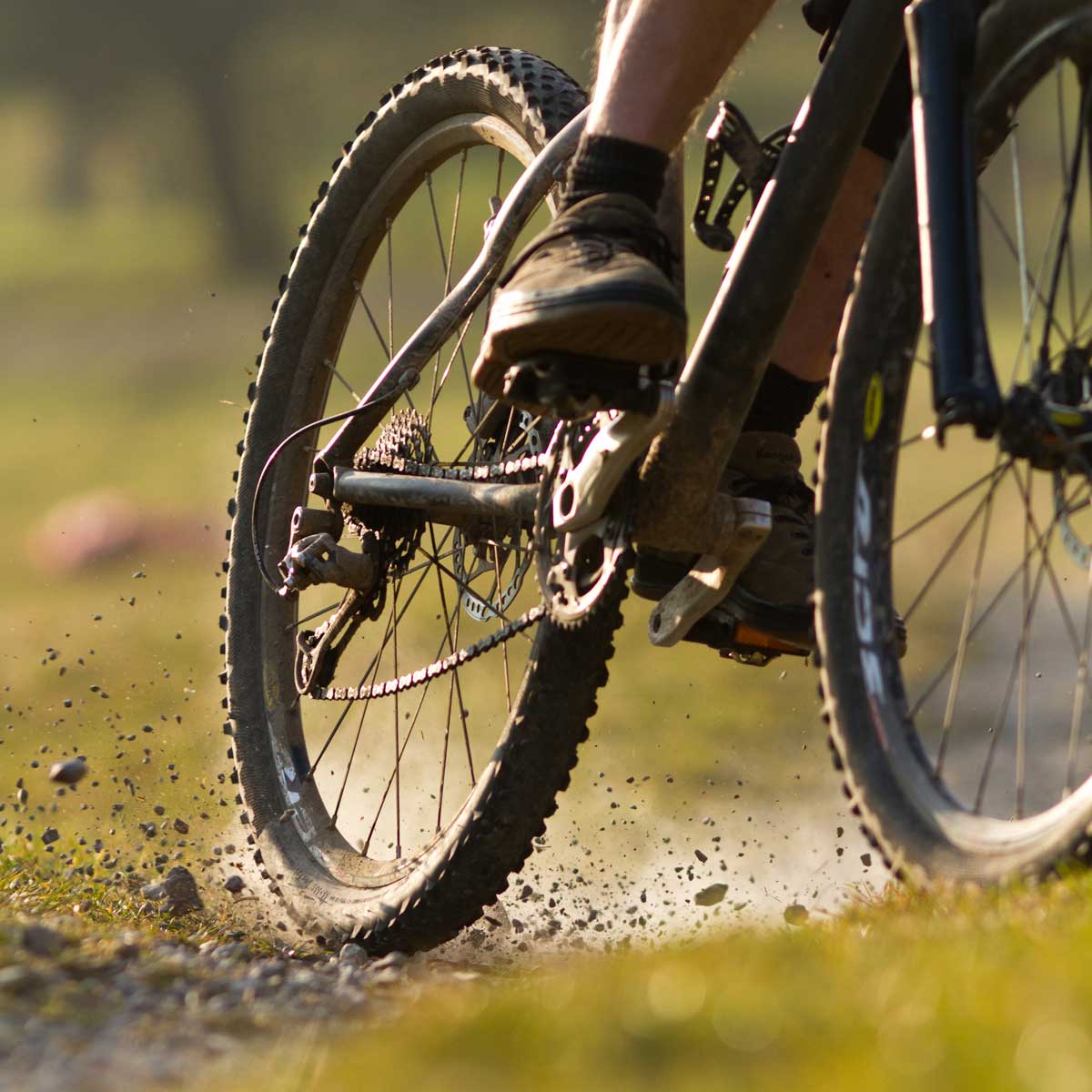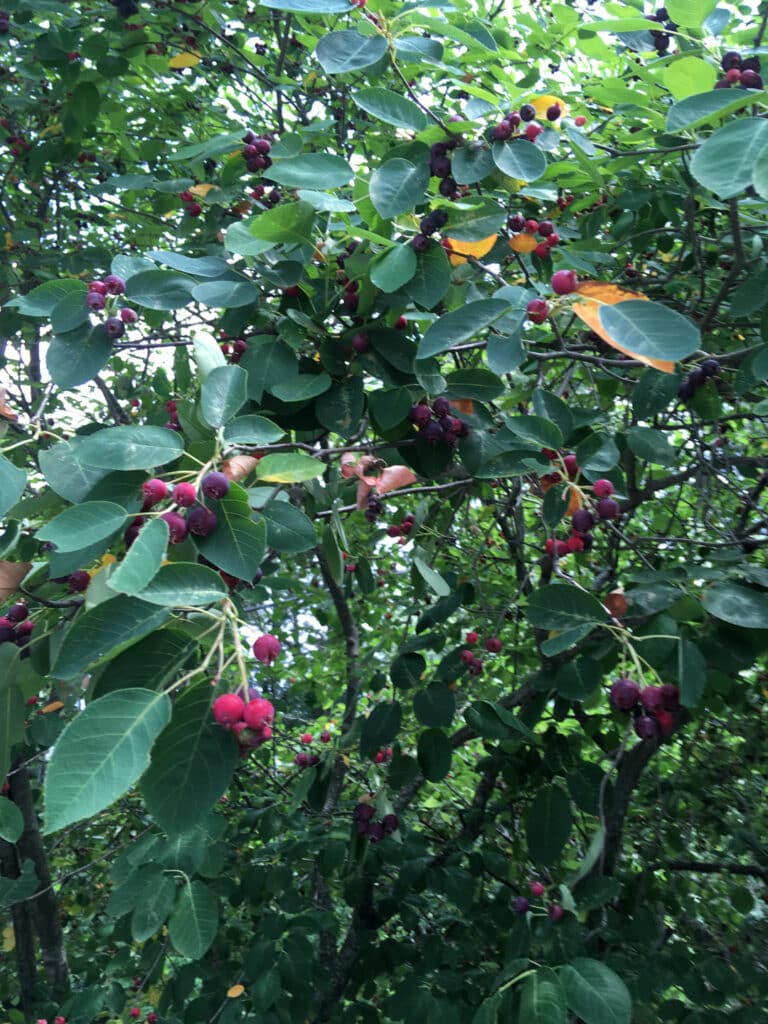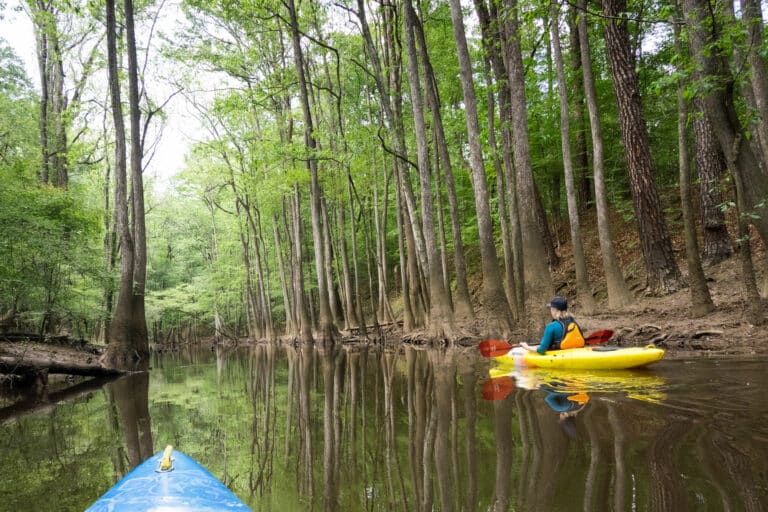There are a hundred of us in a makeshift parking lot on the edge of Pisgah National Forest, and we’re all freaking out about our tire pressure. We’re about to ride the Pisgah Monster Cross, a massive 70-mile loop of gravel and paved roads, and all anyone can talk about is psi. 38? 50? One guy says he’s going to run his tire pressure high for the first half of the race, then lower it when we hit the longest stretch of gravel. Then he changes his mind, cursing the sky above. Apparently, running the right tire pressure is life or death when your up against a gravel grinder.
This is only the second year for the Monster Cross, so nobody’s really sure what gear to run. For most of us in the parking lot, it’s our first foray into gravel road racing, a relatively new category of bike race that has cyclists riding ultra distances over a mix of paved roads and washed-out gravel forest roads. It’s not road biking and it’s not mountain biking and it’s not quite cross biking. It’s something else altogether and nobody really knows what bike works the best. Scan the parking lot and you see some 29er mountain bikes, some road bikes with fat slick tires, and a bunch of cross bikes. Then you have the weird Frankenstein bikes—custom-built hybrids, like the one a British guy who’s parked next to me is riding. It’s a mountain bike with drop bars and cross tires. It’s weird. The dude keeps looking over my bike (a full-suspension mountain bike with 26 inch wheels) and saying, “I think you’ll be fine,” over and over. But the way he says it makes me think I won’t be fine.
Picture an epic mountain bike ride: huge gravel road climbs, maybe some paved road connectors, all followed by swoopy, technical singletrack. Now take away the singletrack, and you’ve got a “gravel grinder.” The question on my mind is, where’s the joy in that?
I ask everyone I make eye contact with that exact question as we line up for the start, and nobody gives me a straight answer. Most just offer advice, like “pace yourself.”
I’m okay with suffering if there’s a carrot on the end of the stick. But suffering just to suffer isn’t my bag.
“I started riding these kinds of loops because I was gun shy to get back on my mountain bike after a big accident,” says race director Eric Wever. “Road biking is boring, so I started mixing in gravel roads. It was so much fun but nobody believed me. I couldn’t get anyone to ride with me. So I decided to put on a race.”
I pedal through my concerns after we hit the first stretch of gravel, which rolls beside the upper Davidson River, a gin-clear trout stream with endless swimming hole potential. I blow by some cross bikes on a sketchy downhill (thanks super fat mountain bike tires!) and watch as one of the safety volunteers takes a gravel turn too fast on a motorcycle, laying the steel beast down in a semi-controlled slide. Therein lies the secret joy of riding gravel. These forgotten roads pass through some of the prettiest corners of the Southern Appalachians. And they’re fun, in a sketchy, kind-of-out-of-control sort of way.
“When you’re riding a road bike on a forest road and you hit gravel corduroy, it’s as exciting as mountain biking,” Wever says. “Throwing in gear that is marginally appropriate adds a lot of challenge.”
On the first big climb of the race, a monstrous slog up Highway 215, I decide that I’m legitimately having fun. The sun is out, it’s barely 62 degrees, and I’m hammering up the hill, standing on my pedals and chatting up every other racer I come across. By the time we hit the postcard-worthy views of the Blue Ridge Parkway, I’m beside myself with joy. I scarf down tiny triangles of peanut butter and jelly at each rest stop and curse myself for not sending a cooler of beer ahead. A rough 70 miles later, after big gravel climbs on forest roads and bigger gravel descents, my legs are cramping so intensely, I can see the knots in my muscles. A handful of cyclocross barriers are set up just before the finish line. Most bikers leap over them, but I’m stiff and saddle sore, so I take the barriers slowly, barely able to straighten my legs. But I’m smiling, the way people tend to smile after a big day on the bike.
Three Keys for Gravel Grinder Success
1. It really is about the bike. No one bike is perfect, which is part of the joy of gravel grinders. If you’re worried about comfort over the long miles, go with a mountain bike. If you’re looking to compete, the cross bike is the weapon for you.
2. Pace yourself. Gravel grinders are ultra distance races, and you don’t get the natural “breaks” of mountain bike races. You’re pedaling even on the downhill. If you go too hard out of the gate, you’ll regret it later in the day.
3. Eat. Eat. Then eat some more. During the last half of the race, I was eating constantly to keep my legs from cramping. If you’re not used to ultra distances, pay special attention to your nutrition.
Six Must Do Gravel Grinders
Pisgah Monster Cross
70 miles, half road, half gravel, with arguably the prettiest stretch of the Blue Ridge Parkway. September, Brevard. pisgahproductions.com
Three Peaks USA
It’s 55 miles with 8,000 feet of elevation gain, and billed as America’s hardest cyclocross race. September, Beech Mountain, N.C. threepeaksusa.com
Southern Cross
50 miles of gravel through North Georgia’s woods, but it begins and ends at a winery, so you got that going for you. February, Dahlonega, Ga. 55nine.com
Hilly Billy Roubaix
West Virginia’s best dirt, gravel, and “paved” roads all in one 70-mile race. Category winners take home a piece of coal. June. abraracing.com
Iron Cross
This was the first ultra cross race in the U.S. It’s 62 miles through the hills of Pennsylvania. September. ironcrossrace.blogspot.com
Devil’s Backbone Mountain Cross
You’ve got a 35- or 75-mile option, and both end at the brewery, so everyone’s a winner. March and August. dbbrewingcompany.com








